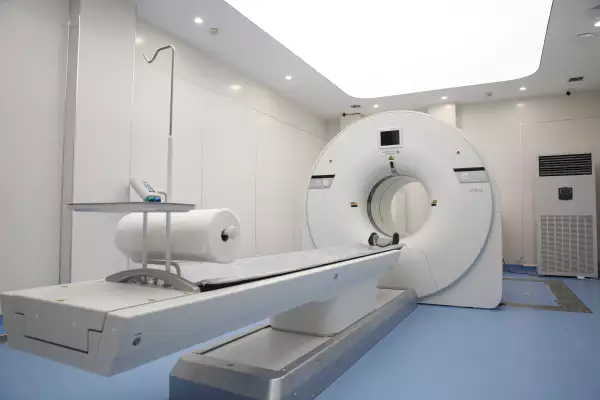



Business Inquiry
Global:
Email:marketing@medicilon.com
+1(781)535-1428(U.S.)
0044 7790 816 954 (Europe)
China:
Email: marketing@medicilon.com.cn
Tel: +86 (21) 5859-1500




Partial imaging of the brain is of great significance for the study of brain function and the pathogenesis of neurological diseases and early diagnosis. The PET-CT technology, which combines the two imaging technologies of PET and CT, has the function of high sensitivity of positron emission imaging (PET) The imaging advantage can make up for the weakness of low resolution in PET imaging through the precise positioning information provided by electronic computed tomography (CT).
Some major diseases develop from the cellular and genetic levels in their early stages, and the use of medical diagnostic technology is of great significance for the early diagnosis and early treatment of major diseases. As an important means of medical diagnosis, molecular imaging technology can break through the limitations of traditional medical imaging for organ and tissue imaging, and realize diagnosis at the cellular and molecular level by introducing molecular probes.
Positron emission computed tomography PET, this technology is a molecular imaging device for functional metabolism imaging. It uses positron nuclides as a tracer to understand the functional metabolic state of the lesion through the uptake of the tracer at the lesion site , So as to correctly diagnose the disease. Computed tomography technology CT is an imaging device that can use X-rays to irradiate selected tomographic planes of a living body, and measure the amount of X-rays transmitted to obtain tomographic images. CT can distinguish anatomical structures better than PET. The PET-CT technology organically combines the two devices to inject a small amount of positron tracer into the body, and then use a special in vitro detection instrument PET to detect the distribution of these positron nuclides in the body’s organs In this case, combined with the precise positioning of CT, it is possible to accurately locate the lesion while qualitatively, thereby greatly improving the accuracy of diagnosis. The small animal PET and PET-CT technology, as a means of leading technological development, can explore the essence of life in a living state.
The molecular imaging platform mainly applies imaging technology to the field of drug research and development. In terms of anti-tumor drug research and development, CNS drug research and development, and new drug research and development for cardiovascular diseases, molecular imaging technologies such as PET technology have obvious advantages and unique values, which are to improve the research and development of new drugs. A powerful tool for efficiency and success rate of clinical trials. The PET Molecular Imaging Center of Medicilon Pharmacodynamics Department is committed to molecular imaging technology that combines function and structure imaging. It uses imaging methods to display specific molecules at the tissue level, cell and subcellular level, and reflect changes in the molecular level in the living body. The qualitative and quantitative research of its biological behavior in imaging has realized a new “precision pharmacology” that can solve the core problems of drug development.
PET molecular imaging technology can truly simulate in vivo pharmacokinetics and pharmacodynamics, and can observe the absorption, distribution, metabolism, and excretion of drugs in small animals from the molecular level in vivo, dynamically and quantitatively. This technology changes the practice of traditional drug research that requires a large number of animals to be killed at different time points, and can realize repeated research, continuous observation, and self-control on the same animal, avoiding species differences and differences within groups. In short, PET-CT can not only study normal biological processes, such as the detection of functional genes, antisense imaging, protein expression, functional receptor imaging, pharmacokinetics, and cell signal transduction, etc.; Realize the research on the biological process of diseases, such as the screening and expression of disease-causing genes, anti-tumor immune surveillance, anti-tumor drug screening and efficacy evaluation, and observation of tumor biological models.
Molecular imaging technology has now become an important tool in the development of new drugs. With the further development of science and technology, the demand for animal CT and PET/CT scientific research is also showing an increasing trend, and the application of PET-CT technology will also increase. The more extensive.
 Relevant
news
Relevant
news